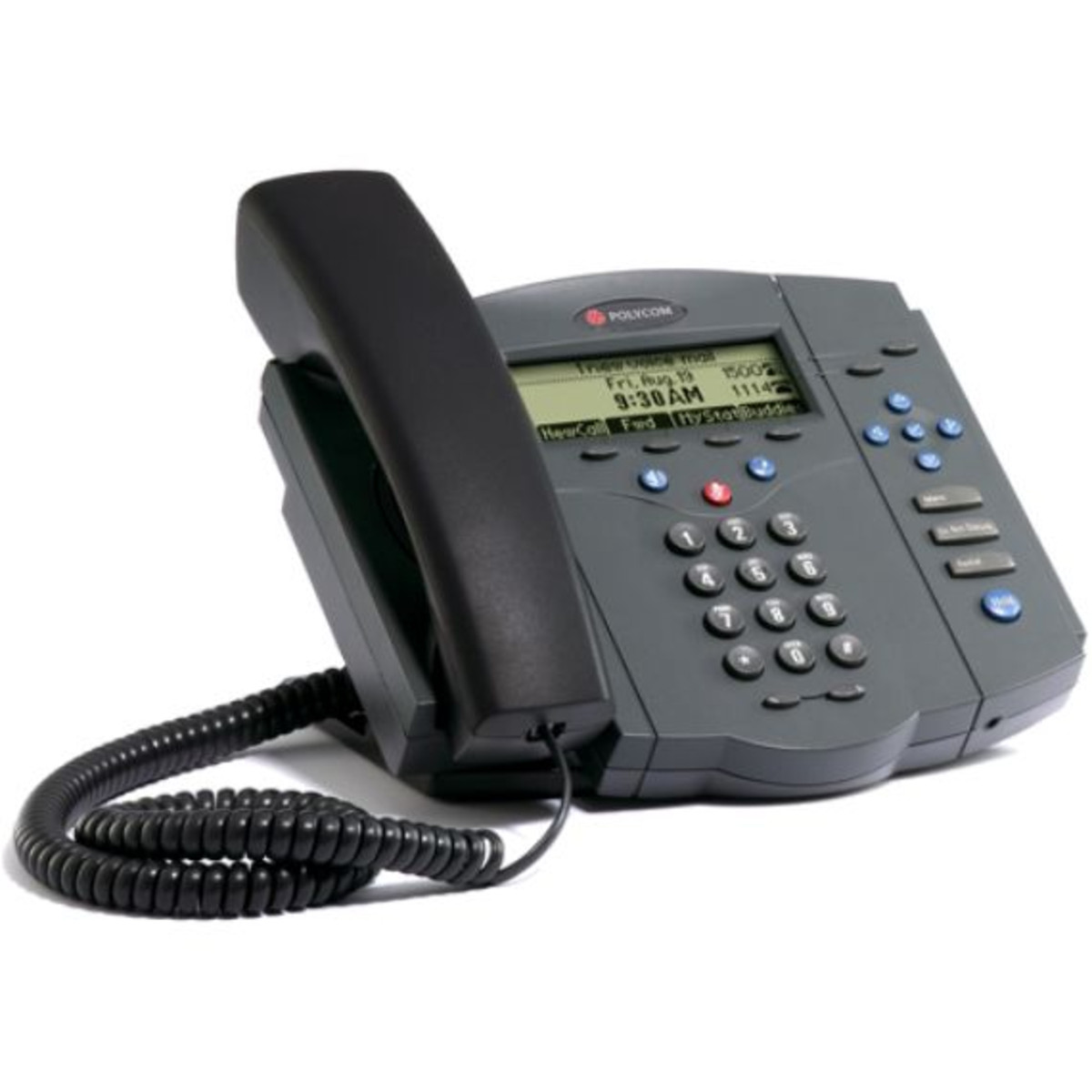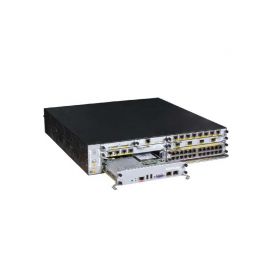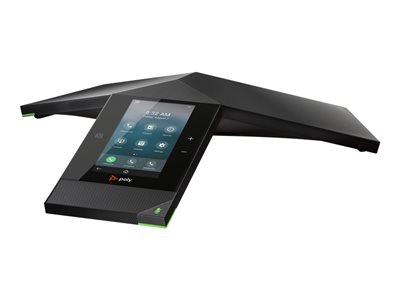| Display |
- 132 x 46 pixel graphical LCD
- Message waiting indicator
|
| Keys |
- 2 line keys with bi-color LEDs
- 9 dedicated keys
- 2 volume control keys
- 3 feature keys
- Mute key
- Headset key
- Hands-free speakerphone key
- Hold key
- 4 context-sensitive soft keys
- 5 display control keys
|
| Power |
- Integrated IEEE 802.3af Power over Ethernet support
- External universal AC adapter (included, 24V DC)
- Power consumption: 3.0W nominal (3.8W max) Note: Power consumption indicated may be exceeded under start-up conditions. Customers should always use the original power source supplied with the phone
|
| Headset Capability |
- Amplified headsets with an RJ-9 jack are recommended
- Hearing Aid Compatible (HAC) in accordance with Section 508 Standards for Electronic and Information Technology, Telecommunication Products (1194.23)
|
| Audio |
- Full-duplex speakerphone with Polycom Acoustic Clarity Technology
- Headset, handset, and hands-free modes
- Local 3-way conferencing
- Individual volume settings with visual feedback for each audio path
- Customizable audio sound effects
- Support for G.711 μ/A and G.729A (Annex B) codecs
- Adaptive jitter buffers and packet loss concealment algorithms
- Acoustic echo cancellation
- Voice activity detection and comfort noise fill
- Telephony Tone Signaling (RFC2833)
- Record and playback for diagnostic purposes
|
| Call Handling Features |
- Shared call/bridged line appearance
- Flexible line appearance (one or more line keys can be assigned for each line extension)
- Busy Lamp Field (BLF)
- Distinctive incoming call treatment/call waiting
- Call timer
- Call transfer, hold, divert (forward), pickup
- Called, calling, connected party information
- Local three-way conferencing
- One-touch speed dial, redial
- Call waiting
- Remote missed call notification
- Intercom
- Automatic off-hook call placement
- Do not disturb function
|
| Network and Provisioning |
- Dual 10/100 Mbps switched Ethernet ports
- Manual or dynamic host configuration protocol (DHCP) setup
- Time and date synchronization using SNTP
- Central provisioning for mass deployments from an FTP, TFTP, HTTP, or HTTPS3 server. Provisioning server redundancy supported2
- QoS support – IEEE 802.1 p/Q tagging (VLAN), Layer 3 TOS, and DSCP2
- Network Address Translation (NAT) support
- RTCP support (RFC1889)
- Event logging
- User-selectable hardware diagnostics (Network/CPU/Memory monitoring)
|
| Protocol Support |
- IETF SIP (RFC 3261 and companion RFCs)
|
| Security |
- Transport Layer Security (TLS)
- Encrypted configuration files
- Digest authentication
- Password login
- Support for URL syntax with password for boot server
- HTTPS secure provisioning
- Support for signed software executables
|
| Feature Summary |
- Up to 2 dedicated lines
- Local feature-rich GUI
- Shared call / bridged line appearance
- Multiple call appearances
- Flexible line appearances
- Call transfer, hold, divert (forward)
- Called, calling, connected party identification / information
- One-touch speed dial, redial
- Local 3-way conferencing
- User configurable contact directory and call history (Missed, placed and received)
- Integration with Microsoft LCS 2005 for telephony and presence2
- Compatibility with Microsoft Office Communicator and Windows® Messenger 5.1 Clients
- Distinctive incoming call treatment / call waiting
- Automatic on-hook call placement (“hot-dial”)
- Do Not Disturb function
- Call timer
- Multilingual user interface supporting Danish, Dutch, English (Canadian / UK / US), French, German, Italian, Norwegian, Portuguese, Russian, Spanish, and Swedish languages
- Country-specific call progress tones
- Wave file support for call progress tones
- Hardware diagnostics
- Status and statistics query
|
| Size |
- 8.25 in x 6.5 in x 7.0 in x 1.25 in
- (21 cm x 16.5 cm x 18 cm x 3 cm) (W x H x D x T)
|
| Weight |
- Shipping: 4.0 lb (1.9 kg)
|









There are no reviews yet.